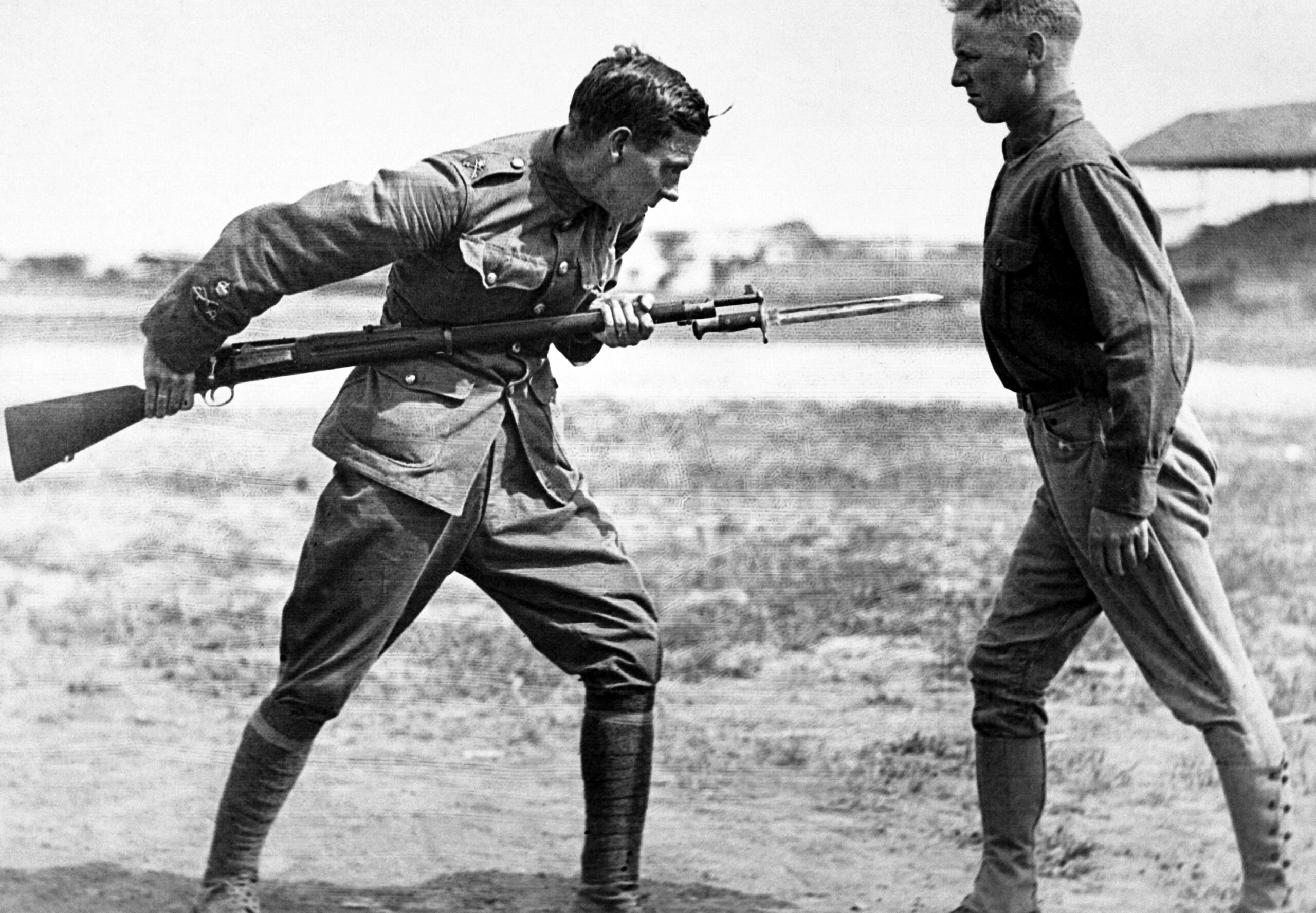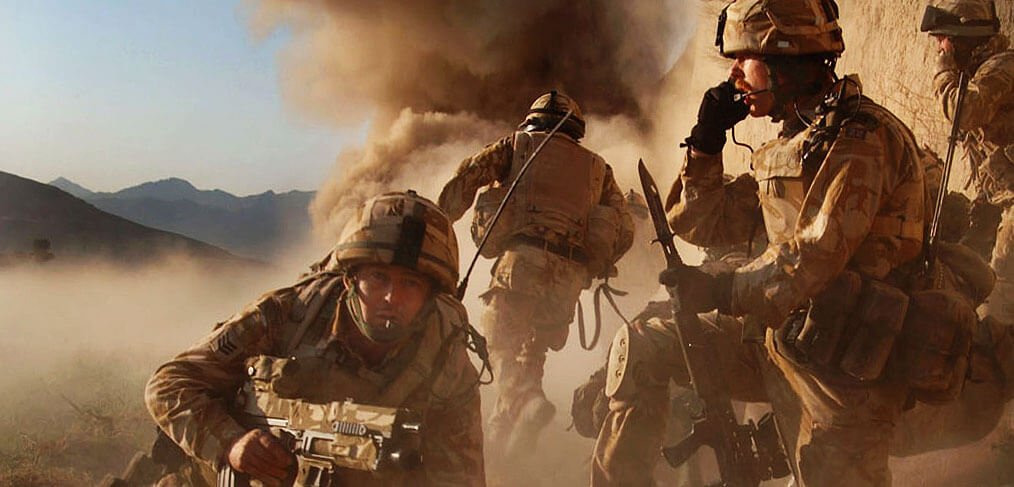
Since the invention of the bayonet in the 17th Century, the weapon became a feature of various armies throughout the following centuries becoming an iconic feature in conflicts such as the Napoleonic Wars and the First World War. Even as we move into an age of increasing warfare conducted with drone technology, airstrikes, and the like, bayonets are still issued to almost every major army on earth. Many people don’t realize that the iconic bayonet charge of wars from centuries past, has made a comeback in modern wars up to 2004. In this article, we’re going to look at 3 examples of the bayonet charge being used in modern warfare.
3. The Falklands War, 1982.
During the Falklands War, which was fought between Britain and Argentina during 1982 over control of the Falklands Islands in the South Atlantic, the bayonet charge was a feature of the bitter modern warfare in the freezing steppes of the Falklands.

Mount Tumbledown formed part of a range of strategic mountain positions held by Argentinian forces over the capital of Port Stanley. The British needed to break this line of steel to get their islands back. During the battle of Mount Tumbledown, a contingent of troops from the feared Gurkhas and the hard Northern soldiers of the Scots Guards launched a nighttime attack against Argentinian forces embedded at the peak of Mount Tumbledown.
They dropped their armor to move faster and in temperates as low as minus 21, they launched a bayonet charge into the Argentine ranks. In the aftermath, 160 Argentinian soldiers were either killed, wounded, or captured. At Goose Green, another infamous battle of the Falklands War, another bayonet charge was launched by the dreaded British Parachute Regiment against Argentinian soldiers.
2. Iraq, 2004.
As Britain joined the US war in Iraq, the first bayonet charge in modern warfare since the Falklands War was soon to take place earning one British soldier the coveted Military Cross for his gallantry. The Battle of Danny Boy took place in 2004 around 15 miles from the Iraqi city of Al Amara. The battle was named Danny Boy after a British vehicle checkpoint that was located nearby. At the height of the Iraq War, the area was ‘hot’ in the sense that it was subject to relentless mortar strikes or the troops were constantly being called in to reinforce other British and US troops under fire nearby.

The checkpoint was being manned by the men of the 1st Battalion the Princess of Wales’ Royal Regiment when they received a call to mount up in their armored Warrior vehicles and head out to assist and extract a unit of the Argyll and Sutherland Highlanders who had come under sustained attack. Shortly after they started to move, their vehicle was ambushed by Iraqi insurgents from various positions. With their position dire, the men received an order to exit the vehicle, fix bayonets, and take the enemy head-on.
The British soldiers then proceeded to launch a bayonet charge across the lethal open ground before launching a grueling close combat battle for over 5 hours with the heavily armed insurgents. Incredibly, the men came out victorious without suffering any casualties despite fighting the most intense face to face combat since the Falklands War.
1. Afghanistan, 2004
Incredibly, the 1st Battalion of the Princess of Wales’s Royal Regiment is behind two of the most infamous bayonet charges in modern warfare. After their exploits in Iraq, other members of the regiment went on to launch another daring bayonet attack against the Taliban in Afghanistan.

Whilst out on patrol to draw out the Taliban who had been planting IEDs in the area during the night, a unit of the PWRR came under sustained enemy fire from all directions which forced the men to take cover in a flooded ditch as the Taliban quickly began to close in on their position and trap them. The soldiers had to think fast or be faced with certain death. The unit’s commander, a corporal named Sean Jones, ordered two of his men to provide covering fire. Before rallying the rest of his men to fix bayonets and follow him in a charge.
“Are you happy? I asked them. They were all young lads and the adrenalin was racing. I shouted ‘follow me’ and we just went for it.”
– Corporal Sean Jones
The terror of the attack took the Taliban by complete surprise. After releasing more intermittent bursts of Kalashnikov fire, they soon fled for their lives allowing the British soldiers to complete their mission.
For more articles on the British Army, check out our related work in our US and NATO section.












